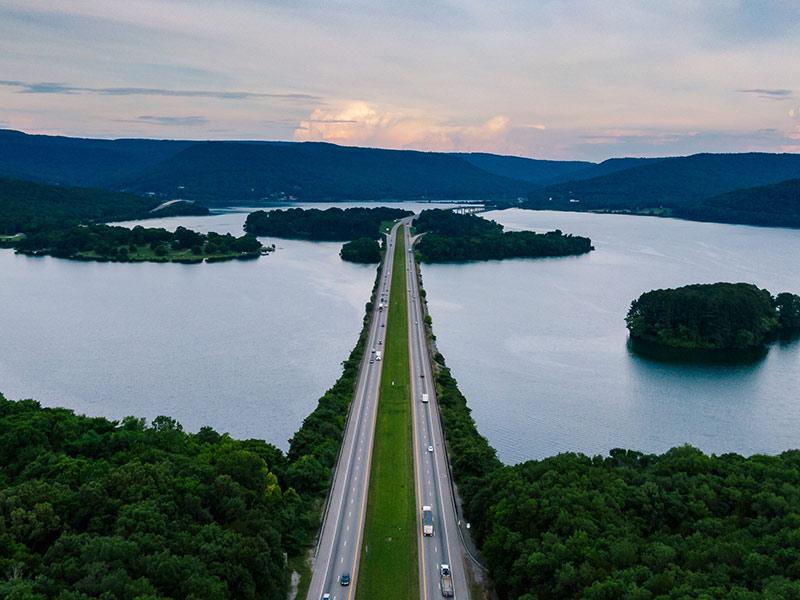Three Futures of Company Climate Action

By: David Wei, Managing Director, BSR
When BSR carries out climate scenario analysis, we construct three or four plausible futures that capture the disruption relevant to a company’s business. We then work with the company to make its strategy more resilient, e.g. by hedging against risks in more than one scenario, by guarding against disastrous tail risks, or by investing in unexpected business opportunities. Climate scenario analysis then reveals how climate action by the company can build resilience to potential disruption.
This year’s Climate Week NYC has advanced a shift from climate commitments to climate action, which we must accelerate to keep the Paris Agreement goals within reach. What will company climate action look like in this Decisive Decade? Here are three plausible futures for companies considering their own climate and environmental strategy.
1. To Net Zero and BelowTwo years ago, the IPCC’s Special Report on 1.5°C made it clear that to reach the Paris Agreement’s stretch target, we will need to reach global net zero emissions by 2050. The north star of net zero is followed by countries—witness the EU’s move towards climate neutrality by 2050, and China’s surprise pledge last week to reach carbon neutrality by 2060. If achieved, China’s pledge alone could reduce warming by 0.2-0.3°C.
Companies too have followed this north star. Last week, Walmart targeted zero emissions across global operations by 2040. In June, Unilever targeted net zero emissions from all of its products by 2039. In January, Microsoft targeted becoming carbon negative by 2030 and removing all of its historical emissions by 2050.
These targets and others like them reveal the main questions companies must answer about their future climate action. Will the company act on its own operations or also across its value chain? (Value chain action is usually more impactful.) What hierarchy of emissions reduction interventions will the company undertake to progress towards its target? (One which maximizes the company’s credibility and environmental integrity.) What will be the role of offsets—whether of avoided emissions or which sequester carbon from the atmosphere? (Hopefully secondary to action in the company’s own value chain.) The Science-Based Targets initiative (SBTi) last week published a paper on the conceptual foundations for net zero targets, attempting to bring some standardization to the debate.
2. Science-Based EverythingIndeed, the success of the SBTi over the past five years, with nearly a thousand companies committed to emissions reduction targets, points to a second plausible future. If science can ground a company’s climate target, can it ground all of a company’s environmental targets? Can we have a science-based corporate environmental strategy?
This is the premise of the initial guidance published by the Science-Based Targets Network last week. The SBTN proposes a framework which can apply to all environmental targets, even if the science underlying them is very different. Companies will need to work through the challenges related to their particular environmental targets, much as Mars did using Science-Based Problem Solving.
The implications for climate action in this future are clear—that it will increasingly align to objective science rather than subjective demands from stakeholders or peer behavior and that companies will attempt to lever an environmental system, rather than satisfy a group of people.
3. Business Transformation By AllTransform to Net Zero, which BSR helped to launch over the summer, points to a third plausible future of climate action. To build net zero value chains, companies will need to integrate climate goals into their corporate strategy and deploy corporate functions well beyond sustainability and operations. All businesses will need to transform.
Net zero value chain targets imply that procurement teams will prefer that resilient, low carbon suppliers support them to decarbonize. Enterprise risk management and business continuity processes will integrate climate risks. Finance departments will ring-fence capital and establish new criteria for its deployment. Public affairs staff will add climate-favorable policies to its list of priority asks. Research and innovation departments will need to develop lower carbon or more resilient designs. Marketing campaigns will foster public support. Human resources will improve recruitment and retention through connection to climate purpose. And company leadership will set out a strategy and management structure befitting this effort.
In this third future, businesses will transform into organizations directed against climate change and find climate action to be one of their main sources of business advantage.
Which of these three plausible futures will become reality? When we carry out climate scenario analysis, we know that none of our scenarios depicts the actual future and that the future will be a combination of all of them. So it is with company climate action. Our task ahead is to build net zero value chains by transforming our businesses and deliver what science demands. What can your company do to take the next step?
Originally appeared on BSR.

